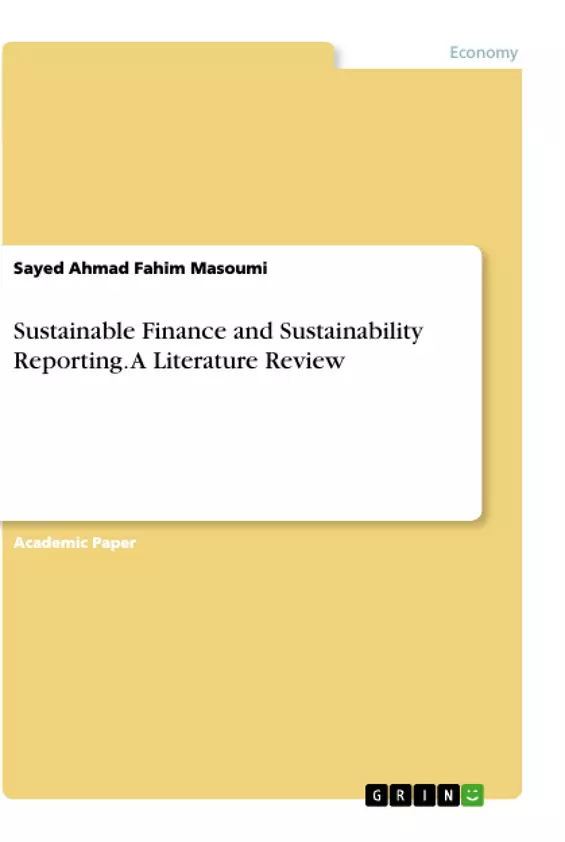This paper gives an overview over sustainable finance and sustainability reporting. To keep and expand the balance of green capital supply and demand, we need sustainable financing on a large scale in various industries. Sustainable finance is standards, regulations, and products from an inclusive process of considering social, governance, and environmental aspects when investing. The investment includes but is not limited to climate change mitigation, forests regeneration, human capital, green skills advancement, and regulations for private and public sectors.
Sustainability reporting showcases operations impact on SD’s social, governance, and environment dimensions. It gives corporates a better image of transparency and, for governments, a broader understanding of companies’ risks and opportunities. Companies are on their pathways to minimize their CO2 emissions. Still, we do not have inclusive assessment standards worldwide to provide the public and investors with indicators of whether a company is sustainable or not. However, the International Financial Reporting Standards (IFRS) is working to develop an International Sustainability Standards Board (ISSB) and introduce it to COP26 stakeholders.
Inhaltsverzeichnis (Table of Contents)
- 1.0 Introduction
- 2.0 Background and Scope
- 2.1- Leadership and Sustainable Development
- 3.0 - Corporate finance and sustainability reporting initiatives
Zielsetzung und Themenschwerpunkte (Objectives and Key Themes)
This literature review aims to explore the relationship between sustainable finance and sustainability reporting. It examines how these concepts can contribute to achieving sustainable development goals (SDGs). The review also investigates the role of leadership in promoting sustainable practices and how investors can be integrated into the process of incorporating sustainability.
- Sustainable Development and its Challenges
- Sustainable Finance and its Role in the Green Economy
- Sustainability Reporting and Transparency
- Leadership and its Importance for Sustainable Practices
- Integration of Investors in Sustainable Finance
Zusammenfassung der Kapitel (Chapter Summaries)
1.0 Introduction
This chapter introduces the concept of sustainable development, emphasizing its importance for the well-being of present and future generations. It highlights the need for a transformation toward a more sustainable world and discusses the role of sustainable finance and reporting in this transition.2.0 Background and Scope
This chapter delves into the historical context of sustainable development, contrasting the industrial era with the current focus on a green and circular economy. It discusses the UN's Sustainable Development Goals (SDGs) and their relevance to sustainable finance. The chapter also explores the role of climate change in driving the need for sustainable practices.2.1- Leadership and Sustainable Development
This section emphasizes the crucial role of leadership in facilitating the transition to a sustainable future. It outlines key qualities of leaders who promote sustainable development and discusses how corporate leaders are pressured to align their operations with both financial value and sustainable outcomes. The importance of stakeholder-centric plans in driving sustainability practices is highlighted.
Schlüsselwörter (Keywords)
This literature review focuses on the key concepts of sustainable finance, sustainability reporting, leadership, and sustainable development goals (SDGs). It examines the intersection of these concepts and their implications for businesses, investors, and the global environment.
- Quote paper
- Sayed Ahmad Fahim Masoumi (Author), 2022, Sustainable Finance and Sustainability Reporting. A Literature Review, Munich, GRIN Verlag, https://www.grin.com/document/1176851



